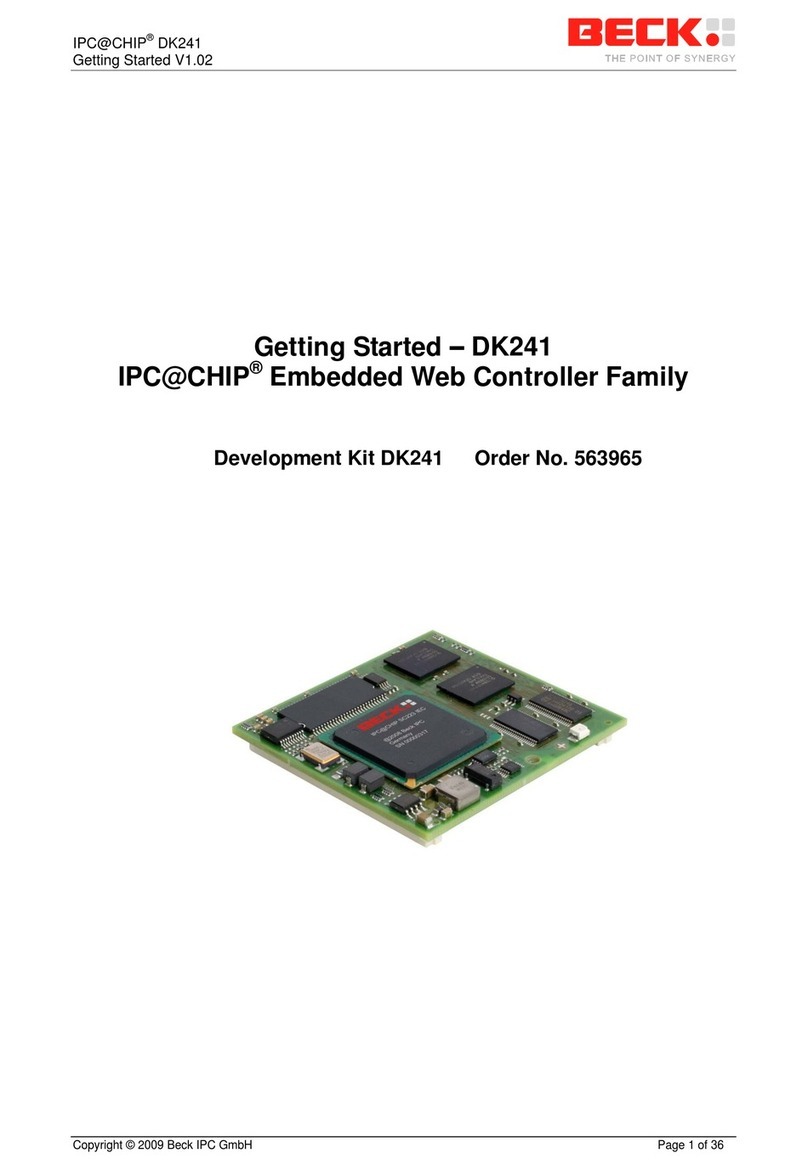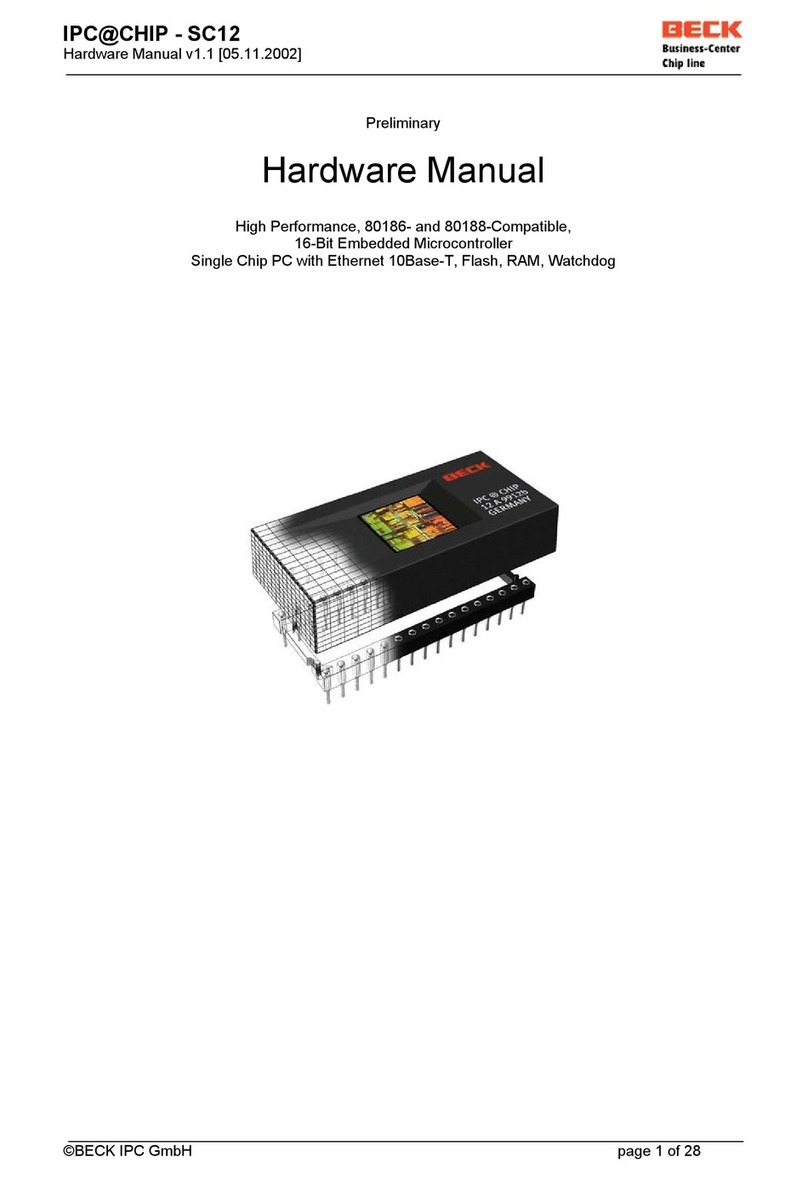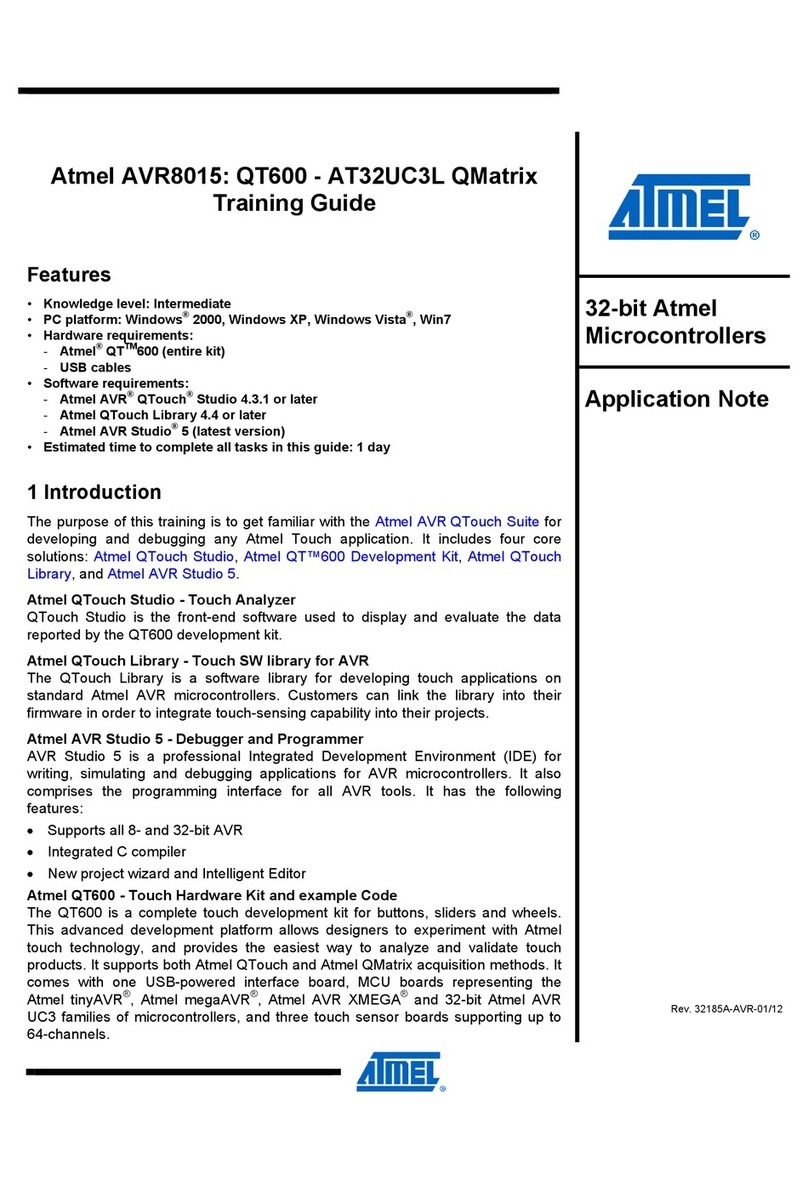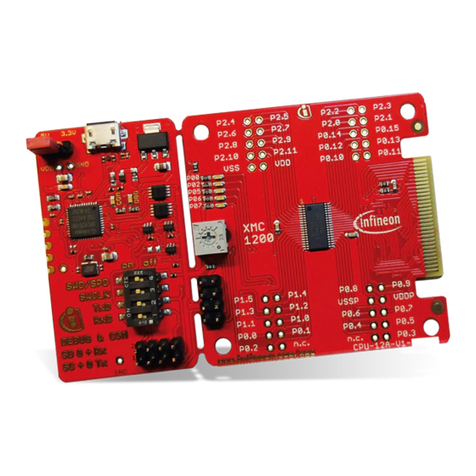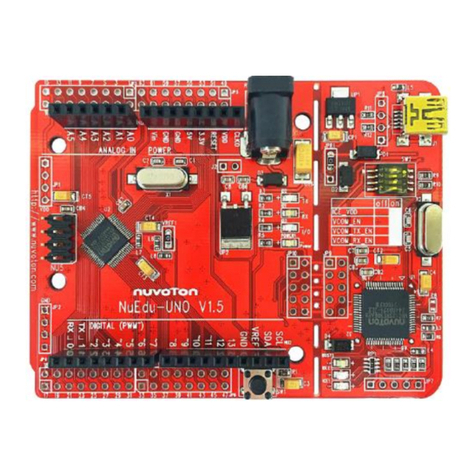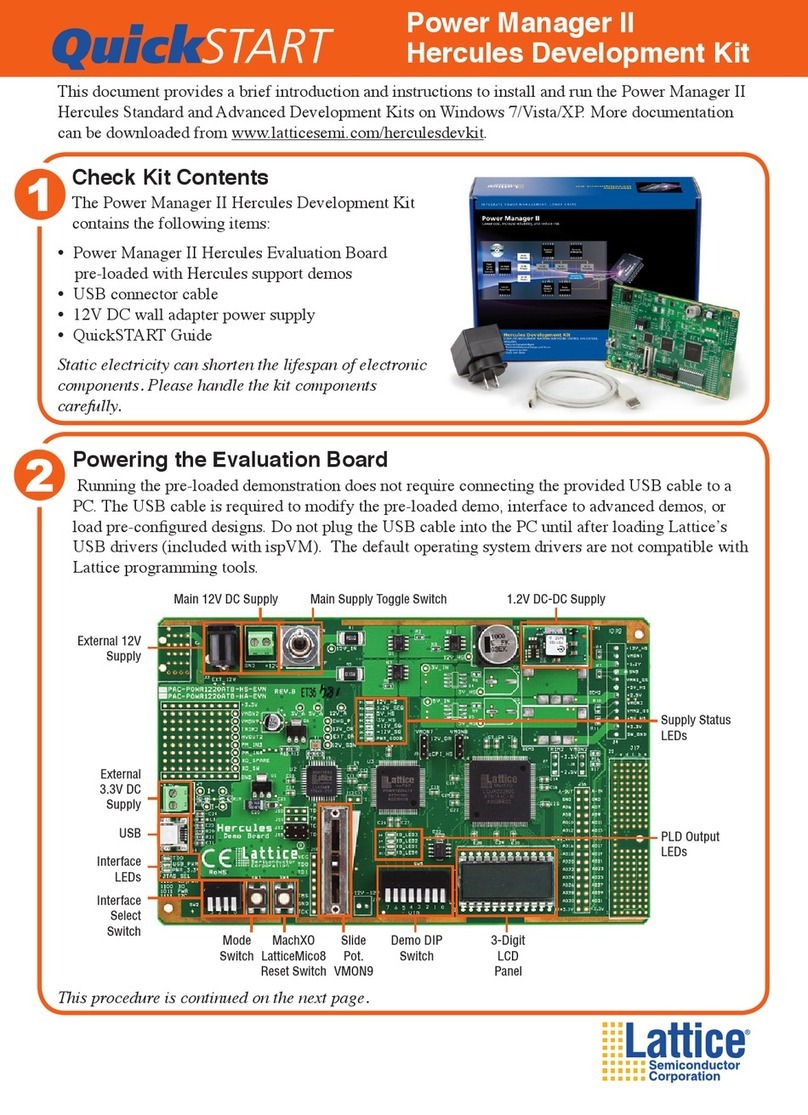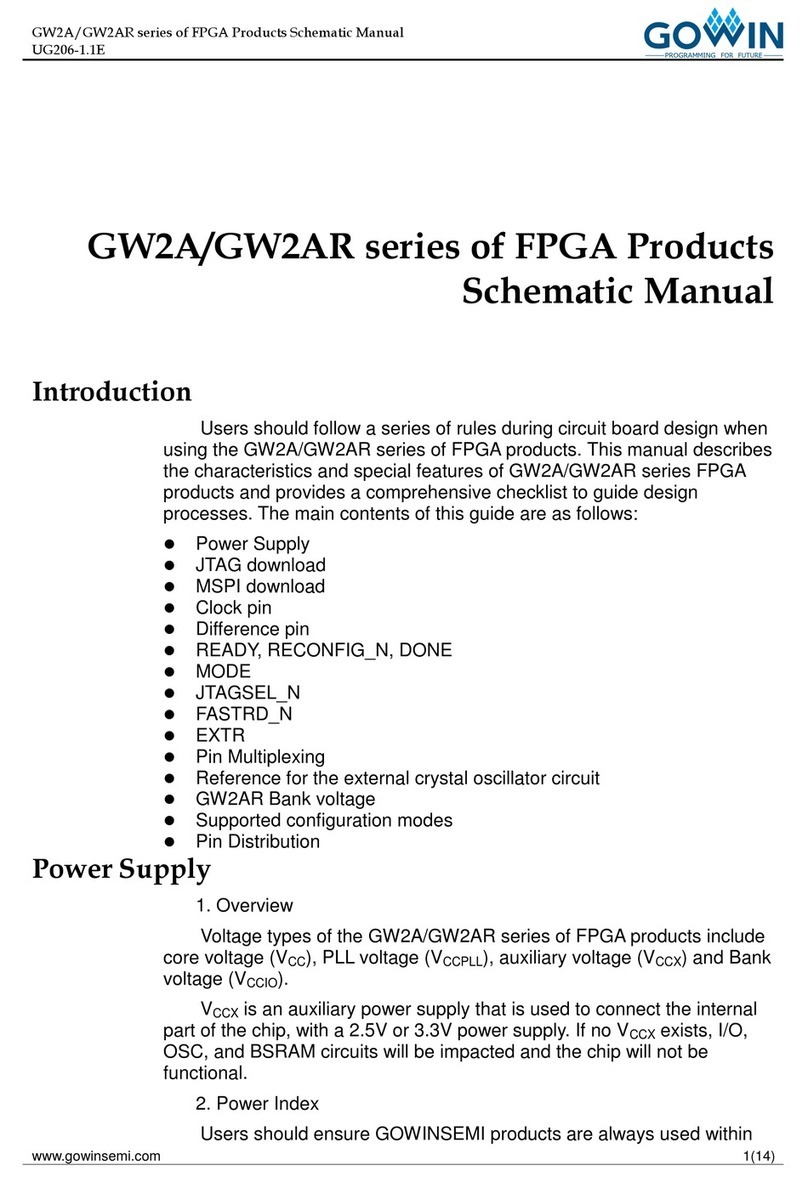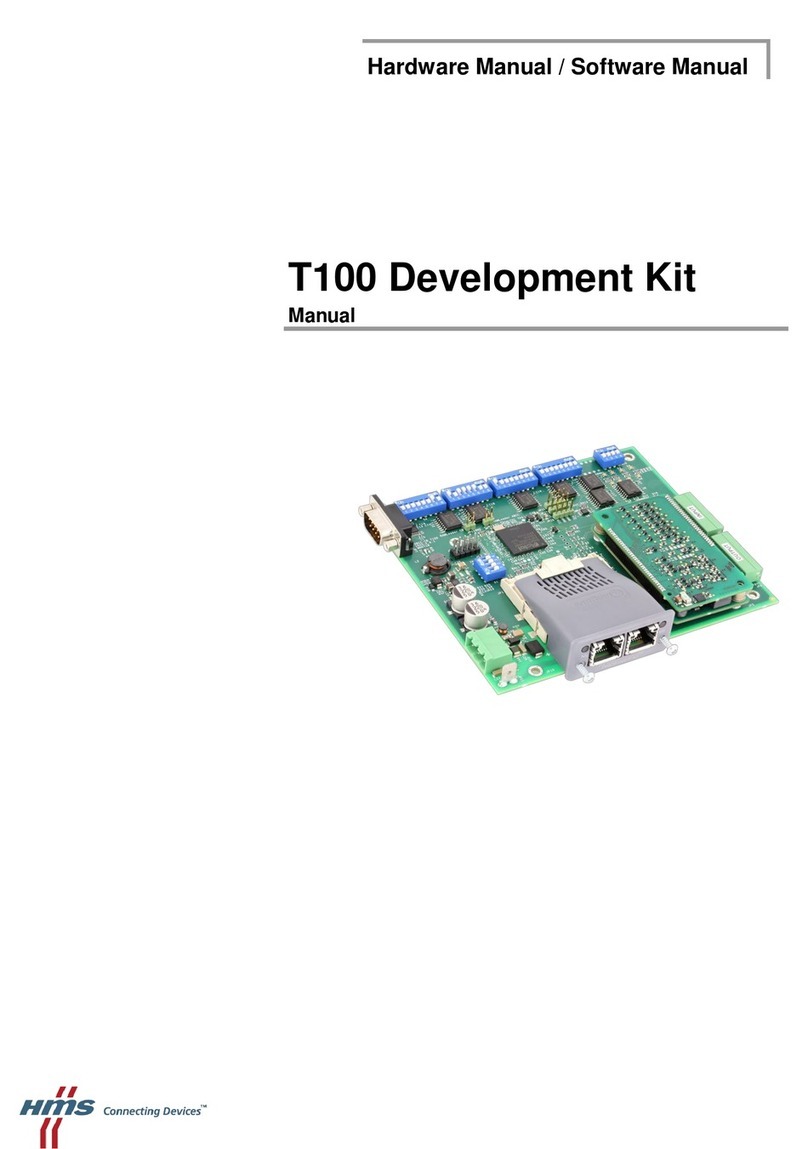Beck IPC@CHIP SC01 User manual

SC01/SC02/SC11/SC12 IPC GmbH
Sc12hw09.doc page 1of 37 24.11.1999 V0.9
TF/WB
Preliminary
Hardware Manual
High Performance, 80186- and 80188-Compatible,
16-Bit Embedded Microcontroller
Single Chip PC with Ethernet 10Base-T
IPC@CHIPis aregistered trademark of BECK IPC GmbH

SC01/SC02/SC11/SC12
IPC GmbH
Sc12hw09.doc page 2of 37 24.11.1999 V0.9
TF/WB
Table of Contents page
1. BASIC SPECIFICATIONS .......3
2. PHYSICAL DIMENSIONS .......5
3. PIN CONFIGURATION .......5
4. PIN FUNCTIONS ........6
4.1 Address / Data bus .......6
4.2 Programmable I/O Pins . . . . . . 7
4.3 Programmable Chip Selects . . . . . . 7
4.4 Interrupts ........8
4.5 Timer .........8
4.6 10Base-T Interface .......9
4.7 Asynchronous Serial Ports . . . . . . 9
4.8 DMA .........10
4.9 Synchronous Peripheral Interface (SPI) . . . . 10
4.10 I2C-Bus ........10
4.11 Reset, Power Fail Generator. . . . . . 10
5. FUNCTIONS THAT ARE MUTUAL EXCLUSIVE . . . . 12
6. SYSTEM OVERVIEW ........14
6.1 Memory map ........14
6.2 System interrupts .......14
7. CHARACTERISTICS ........15
8. APPLICATION EXAMPLES .......16
8.1 Evaluation board DK40 . . . . . . 17
8.2 BECK FEC-FC34 .......18
8.2 Power-fail / Reset-out . . . . . . 19
8.3 NMI / Reset-in .......20
8.4 Link- and Traffic-LED.......21
9. HOW TO CONNECT ? ........22
9.1 256x 8bit I/O-Extension using 74HCT373/245 ...23
9.2 8255 24bit I/O and 8254 timer/counter . . . . 24
9.3 Multimeter ADC MAX133CPL .....25
9.4 8259 peripheral interrupt controller . . . . 26
9.5 16C452/552 UART and printer port.....27
9.6 16C452/552 without additional address latch ...28
9.7 8250 UART with multiplexed address/data bus ...29
9.8 8251 UART ........30
9.9 low-cost 8bit ADC .......31
9.10 µPD7004 up to 16x 10bit ADC .....32
9.11 DAC4815 4x 12bit .......33
9.12 LC-display ........34
9.13 Ethernet to Ethernet router . . . . . . 35
9.14 compact flash disk 8bit . . . . . . 36
9.15 82527 CAN bus master . . . . . . 37

SC01/SC02/SC11/SC12
IPC GmbH
Sc12hw09.doc page 3of 37 24.11.1999 V0.9
TF/WB
1. BASIC SPECIFICATIONS
@CHIP CPU RAM FLASH Ethernet
SC01 80188 20MHz 128 Kbyte 128 Kbyte No
SC02 80188 20MHz 128 Kbyte 128 Kbyte 10Base-T
SC11 80186 20MHz 512 Kbyte 512 Kbyte No
SC12 80186 20MHz 512 Kbyte 512 Kbyte 10Base-T
IPC@CHIP® family 80186- and 80188-compatible
microcontroller with up to 512KB-RAM, 512KB-Flash and Ethernet on Chip
-Lower system cost with higher performance
High performance
-20-MHz operating frequencies
-Zero-wait-state operation at 20 MHz
-1-Mbyte internal memory space
-6 x 256-byte I/O space
-Low-power CMOS process with single 5V power supply
Enhanced integrated peripherals
-14 programmable I/O (PIO) pins
-Two full-featured asynchronous serial ports allow full-duplex, 7-bit, 8-bit, or 9-bit data
transfers, Serial port hardware handshaking with CTS,RTS, ENRX, and RTR selectable
for each port
Improved serial port operation enhances 9-bit DMA support
Independent serial port baud rate generators
DMA to and from the serial ports
-Ethernet controller for IEEE 802.3, 10Base-T,
Integrated 10Base-T transceiver (SC02 and SC12 only)
Auto-Polarity detection and correction
Loopback capability for diagnostics
Receiver and collision squelch circuit to reduce noise
Built-in pre-distortion resisters for 10Base-T application
-Watchdog timer
-Pulse-width demodulation option
-Reset configuration register
Familiar 80C186 peripherals
-Two independent DMA channels
-Programmable interrupt controller with up to six external and eight internal interrupts
-Three programmable 16-bit timers
-Programmable memory and peripheral chip-select logic
Software-compatible with the 80C186 and
80C188 microcontrollers with widely available
native development tools, applications, and
system software
Available in the following packages:
-32-pin, plastic pack (DIL32)

SC01/SC02/SC11/SC12
IPC GmbH
Sc12hw09.doc page 4of 37 24.11.1999 V0.9
TF/WB
The @CHIP SC01/SC02/SC11/SC12 microcontrollers are part of the Beck IPC@CHIP®
family of System on Chip microcontrollers and microprocessors based on the x86
architecture. The IPC@CHIPfamily microcontroller is the ideal upgrade for 80C186/188
designs requiring 80C186/188 compatibility, increased performance, serial
communications, Ethernet communications, a direct bus inter-face, and more than 64K of
memory.
The IPC@CHIPfamily microcontrollers integrates up to 512Kbyte DRAM with increased
performance and up to 512Kbyte FLASH in reducing memory subsystem costs.
The IPC@CHIPfamily microcontrollers also integrates the functions of the CPU,
multiplexed address bus, three timers, watchdog timer, chip selects, interrupt controller,
two DMA controllers, two asynchronous serial ports, programmable bus sizing, and pro-
grammable I/O (PIO) pins on one chip.
The @CHIP SC11/SC12 microcontroller is a highly integrated design that provides all
Media Access Control (MAC) and Encode-Decode (ENDEC) functions in accordance with
the IEEE 802.3 standard. Network interfaces including 10Base-T via the Twisted-pair. The
integrated 10Base-T transceiver makes @Chip SC11/SC12 more cost-effective.
Compared to the 80C186/188 microcontrollers, the IPC@CHIPfamily microcontrollers
enables designers to reduce the size, power consumption, and cost of embedded
systems, while increasing reliability, functionality, and performance.
The IPC@CHIPfamily microcontrollers has been designed to meet the most common
requirements of embedded products developed for the communications, office
automation, mass storage, and general embedded markets. Specific applications
including industrial controls, data collection, protocoll conversion, process monitoring and
internet connectivity.
IPC@CHIP family microntroller block diagram
DRAM
256Kx16
128Kx8
CPU
80186
80188
Ethernet
PHY
Flash
512Kx8
128Kx8
DMA
UART
CORE
LOGIC
WATCH
DOG
8 Bit Address-/Databus
AD[0..7], ALE
A[0..2], RD#, WR#
INT[0,2..4], INTA#
10Base-T
TPTX+, TPTX-
TPRX+, TPRX-
Link/Traffic LED
TxD[0..1], RxD[0..1]
CTS[0..1], RTS[0..1]
ENRX0, RTR0
DRQ[0..1]
Programmable I/O
PIO[0..13]
PCS[0..3,5..6]
TMRIN[0..1]
TMROUT[0..1]
RESET#, NMI
Ethernet
MAC
Oscilator
20MHz

SC01/SC02/SC11/SC12
IPC GmbH
Sc12hw09.doc page 5of 37 24.11.1999 V0.9
TF/WB
2. PHYSICAL DIMENSIONS
3. PIN CONFIGURATION
PIO7 / RXD0
1
32
VCC
PIO8 / TXD0
2
31
I2CCLK / MSCK / DRQ1 / INT6 / PIO0
PIO9 / ENRX0 / CTS0
3
30
I2CDAT / MISO / DRQ0 / INT5 / PIO1
PIO10 / RTR0 / RTS0
4
29
A2 / PCS6# / PIO2
PIO11 / TXD1
5
28
A1 / PCS5# / TMRIN1 / TMROUT1 / PIO3
PIO12 / INT3 / RXD1
6
IPC@CHIP
27
A0 / PCS1# / TMRIN0 / PIO4
PIO13 / INT0 / TMROUT0
7
26
RTS1# / MOSI / PCS3# / INT4 / PIO5
AD0
8
25
CTS1# / MEN / PCS2# / INT2 / INTA# / PIO6
AD1
9
24
ALE / PCS0#
AD2
10
23
WR#
AD3
11
22
RD#
AD4
12
21
TPRX- (SC02, SC12 only)
AD5
13
20
TPRX+ (SC02, SC12 only)
AD6
14
19
TPTX- (SC02, SC12 only)
AD7
15
18
TPTX+ (SC02, SC12 only)
GND
16
17
RESET# / NMI / LINK LED

SC01/SC02/SC11/SC12
IPC GmbH
Sc12hw09.doc page 6of 37 24.11.1999 V0.9
TF/WB
4. PIN FUNCTIONS
Pins That Are Used by Emulators
The following pins are used by emulators for debugging purposes: TxD0, RxD0
Pin Terminology
The following terms are used to describe the pins:
Input (I) - An input-only pin.
Output (O) - An output-only pin.
Input/Output (I/O) - A pin that can be either input or output.
Synchronous - Synchronous inputs must meet setup and hold times in relation to CLK.
Synchronous outputs are synchronous to CLK.
Asynchronous - Inputs or outputs that are asynchronous to CLK.
4.1 Address / Data bus
Pin Name Type Function
A[0..2] OAddress Bus (output, three-state, synchronous)
These pins supply nonmultiplexed memory or I/O addresses to
the system one half of a CLK period earlier than the multiplexed
address and data bus (AD7–AD0). During a bus hold or reset
condition, the address bus is in a high-impedance state.
While the IPC@CHIPfamily microntroller directly interfacing
DRAM, A2–A0 will serve as the nonmultiplexed address bus for
external SRAM, FLASH, PROM, EPROM, and peripherals.
AD[0..7] I/O Multiplexed Address and Data Bus (input/output, three-
state, synchronous, level-sensitive)
These time-multiplexed pins supply partial memory or I/O
addresses, as well as data, to the system. This bus supplies the
low-order 8 bits of an address to the system during the first
period of a bus cycle (t1), and it supplies data to the system
during the remaining periods of that cycle (t2 , t3 , and t4). In 8-
bit mode, AD7–AD0 supplies the data for both high and low bytes.
The address phase of these pins can be disabled.
During a bus hold or reset condition, the address and data bus is
in a high-impedance state.
ALE OAddress Latch Enable (output, synchronous)
This pin indicates to the system that an address appears on the
address and data bus (AD7–AD0). The address is guaranteed to
be valid on the trailing edge of ALE. This pin is three-stated during
ONCE mode.
ALE is three-stated and held resistively Low during a bus hold
condition. In addition, ALE has a weak internal pulldown resistor
that is active during reset, when it is enabled by software.
RD# ORead Strobe (output, synchronous, three-state)
This pin indicates to the system that the microcontroller is
performing a memory or I/O read cycle. RD is guaranteed to not
be asserted before the address and data bus is floated during the
address-to-data transition. RD floats during a bus hold condition.
WR# OWrite Strobe (output, synchronous)
This pin indicates to the system that the data on the bus is to be
written to a memory or I/O device. WR floats during a bus hold or
reset condition.

SC01/SC02/SC11/SC12
IPC GmbH
Sc12hw09.doc page 7of 37 24.11.1999 V0.9
TF/WB
4.2 Programmable I/O Pins
Pin Name Type Function
PIO[0..13] I/O Programmable I/O Pins (input/output, asynchronous,
open-drain)
The IPC@CHIPfamily microcontroller provides 14 individually
programmable I/O pins. Each PIO can be programmed with the
following attributes: PIO function (enabled/disabled), direction
(input/output), and weak pullup or pulldown.
PIO
##
After power-on reset, the PIO
pin defaults to
programmable as
Input with
0Input without pullup
1Input without pullup
2PCS6# pullup
3Input with pullup pullup / pulldown
4Input with pullup pullup
5Output high pullup
6Input with pullup pullup
7RxD0 pullup
8TxD0 pullup
9Input with pullup pullup
10 Output high pullup
11 TxD1 pullup
12 RxD1 pullup
13 Output low pulldown
4.3 Programmable Chip Selects
Pin Name Type Function
PCS[0..3] OPeripheral Chip Selects (output, synchronous)
These pins indicate to the system that an I/O memory access is in
progress to the corresponding region of the peripheral memory.
PCS3–PCS0 are three-stated and held resistively High during a
bus hold condition. In addition, PCS3–PCS0 each have a weak
internal pullup resistor that is active during reset. The PCS
outputs assert with the multiplexed AD address bus. Note also
that each peripheral chip select asserts over a 256-byte address
range, which is twice the address range covered by peripheral
chip selects in the 80C186 and 80C188 microcontrollers. PCS3–
PCS0 also have extended wait state options, default is 15 wait
states.
PCS[5..6] OPeripheral Chip Selects (output, synchronous)
These pins indicate to the system that an I/O memory access is in
progress to the corresponding region of the peripheral memory.
PCS6–PCS5 are three-stated and held resistively High during a
bus hold condition. In addition, PCS6–PCS5 each have a weak
internal pullup resistor that is active during reset. The PCS
outputs assert with the multiplexed AD address bus. Note also
that each peripheral chip select asserts over a 256-byte address
range, which is twice the address range covered by peripheral
chip selects in the 80C186 and 80C188 microcontrollers. PCS6–
PCS6 also have extended wait state options, default is 3 wait
states, on SC02 and SC12 changing is not allowed.

SC01/SC02/SC11/SC12
IPC GmbH
Sc12hw09.doc page 8of 37 24.11.1999 V0.9
TF/WB
4.4 Interrupts
Pin Name Type Function
INT[0,2-4] IMaskable Interrupt Request (input,asynchronous)
These pins indicate to the microcontroller that an interrupt
request has occurred. If the INT pin is not masked, the
microcontroller transfers program execution to the location
specified by the corresponding INT vector in the microcontroller
interrupt vector table.
Interrupt requests are synchronized internally and can be edge-
triggered or level-triggered. To guarantee interrupt recognition,
the requesting device must continue asserting INT until the
request is acknowledged. INT2 becomes INTA when INT0 is
configured in cascade mode.
INTA# OInterrupt Acknowledge (output, synchronous)
When the microcontroller interrupt control unit is operating in
cascade mode, this pin indicates to the system that the
microcontroller needs an interrupt type to process the interrupt
request on INT0. The peripheral issuing the interrupt request
must provide the microcontroller with the corresponding interrupt
type.
PWD Pulse Width Demodulator (input, Schmitt trigger)
If pulse width demodulation is enabled, PWD processes a signal
through the Schmitt trigger. PWD is used internally to drive
TMRIN0 and INT2, and PWD is inverted internally to drive
TIMERIN1 and INT4. If INT2 and INT4 are enabled and timer 0
and timer 1 are properly configured, the pulse width of the
alternating PWD signal can be calculated by comparing the values
in timer 0 and timer 1.
In PWD mode, the signals TMRIN0, TMRIN1 and INT4 can be used
as PIOs. If they are not used as PIOs, they are ignored internally.
4.5 Timer
Pin Name Type Function
TMRIN[0..1] ITimer Input (input, synchronous, edge-sensitive)
These pins supply a clock or control signal to the internal
microcontroller timer 0 and 1. After internally synchronizing a
Low-to-High transition on TMRIN, the microcontroller increments
the corresponding timer. TMRIN must be tied High if not being
used. When PIO is enabled, TMRIN is pulled High internally.
TMRIN0 is driven internally by INT2/PWD when pulse width
demodulation mode is enabled. The TMRIN0 pin can be used as a
PIO when pulse width demodulation mode is enabled.
TMROUT[0..1] OTimer Output (output, synchronous)
These pins supplies the system with either a single pulse or a
continuous waveform with a programmable duty cycle. TMROUT is
floated during a bus hold or reset.

SC01/SC02/SC11/SC12
IPC GmbH
Sc12hw09.doc page 9of 37 24.11.1999 V0.9
TF/WB
4.6 10Base-T Interface
Pin Name Type Function
TPTX[+,-] OTwisted Pair Driver (outputs)
These two outputs provide the TP drivers with pre-distortion
capability
TPRX[+,-] ITwisted Pair Receive (inputs).
A differential receiver tied to the receive transformer pair of the
twisted-pair wire.
The receive pair of the twisted-pair medium is driven with 10
Mbits/s Manchester-encoded data
LINK LED OLink and Traffic LED Driver (output)
If TP is LINK-pass, this pin outputs 2.5V.
This pin will output 5V for 80ms to indicate the presence of traffic
on the network.
If no LED / 200Ωcombination is connexted to this pin, 1K pullup
should be tied to this pin, to make shure RESET# and NMI
function is available.
4.7 Asynchronous Serial Ports
Pin Name Type Function
TxD[0..1] OTransmit Data (output, asynchronous)
These pins supply asynchronous serial transmit data to
the system from serial port 0 and 1.
RxD[0..1] IReceive Data (input, asynchronous)
These pins supply asynchronous serial receive data from the
system to asynchronous serial ports 0 and 1.
CTS[0..1] IClear-to-Send (input, asynchronous)
These pins provide the Clear-to-Send signal for asynchronous
serial port 0 and 1 when hardware flow control is enabled for the
port. The CTS signals gate the transmission of data from the
associated serial port transmit register. When CTS is asserted, the
transmitter begins transmission of a frame of data, if any is
available. If CTS is deasserted, the transmitter holds the data in
the serial port transmit register. The value of CTS is checked only
at the beginning of the transmission of the frame.
ENRX0 IEnable-Receiver-Request 0 (input, asynchronous)
This pin provides the Enable Receiver Request for asynchronous
serial port 0 when hardware flow control is enabled for the port.
The ENRX0 signal enables the receiver for the associated serial
port.
RTS[0..1] OReady-to-Send 0 (output, asynchronous)
These pins provide the Ready-to-Send signal for asynchronous
serial ports 0 and 1 when hardware flow control is enabled for the
port. The RTS signals are asserted when the associated serial port
transmit register contains data that has not been transmitted.
RTR0 OReady-to-Receive 0 (output, asynchronous)
This pin provides the Ready-to-Receive signal for asynchronous
serial port 0 when hardware flow control is enabled for the port.
The RTR0 signal is asserted when the associated serial port
receive register does not contain valid, unread data.

SC01/SC02/SC11/SC12
IPC GmbH
Sc12hw09.doc page 10 of 37 24.11.1999 V0.9
TF/WB
4.8 DMA
Pin Name Type Function
DRQ[0..1] IDMA Request (input, synchronous, level-sensitive)
These pins indicate to the microcontroller that an external device
is ready for DMA channel 0 or 1 to perform a transfer. DRQ0 is
edge-triggered and internally synchronized. DRQ is not latched
and must remain active until serviced.
4.9 Synchronous Peripheral Interface (SPI)
Pin Name Type Function
MEN ONot implemented yet
MSCK ONot implemented yet
MISO INot implemented yet
MOSI ONot implemented yet
4.10 I2C-Bus
Pin Name Type Function
I
2
CCLK OI2C-Bus Clock (output)
This pin provides clock to an external I2C slave.
I
2
CDAT I/O I2C-Bus Data in/out (input/output)
This pin acts either as data input or data output. The IPC@CHIP
family microntroller handles up to 127 external slaves. Itself is
always master and cannot addressed as slave.
4.11 Reset, Power Fail Generator
Pin Name Type Function
RESET# I/O Reset (input/output, asynchronous, level-sensitive)
If voltage on this pin goes down below 0.8V this pin requires the
microcontroller to perform a reset. When RESET is asserted, the
microcontroller immediately terminates its present activity, clears it’s
internal logic, and transfers CPU control to the reset address,
FFFF0h.
If Vcc goes down below 4.5V or internal watchdog is released this
pin will be driven to GND.
NMI INonmaskable Interrupt (input, synchronous, edge-sensitive)
If voltage on this pin goes down below 1.5V it indicates to the
microcontroller that an interrupt request has occurred. The NMI
signal is the highest priority hardware interrupt and, unlike the
INT6–INT0 pins, cannot be masked. The microcontroller always
transfers program execution to the location specified by the
nonmaskable interrupt vector in the microcontroller interrupt vector
table when NMI is asserted.
Although NMI is the highest priority interrupt source, it does not
participate in the priority resolution process of the maskable
interrupts. There is no bit associated with NMI in the interrupt in-
service or interrupt request registers. This means that a new NMI
request can interrupt an executing NMI interrupt service routine. As

SC01/SC02/SC11/SC12
IPC GmbH
Sc12hw09.doc page 11 of 37 24.11.1999 V0.9
TF/WB
with all hardware interrupts, the IF (interrupt flag) is cleared when
the processor takes the interrupt, disabling the maskable interrupt
sources. However, if maskable interrupts are re-enabled by software
in the NMI interrupt service routine, via the STI instruction for
example, the fact that an NMI is currently in service does not have
any effect on the priority resolution of maskable interrupt requests.
For this reason, it is strongly advised that the interrupt service
routine for NMI should not enable the maskable interrupts. An NMI
transition from Low to High is latched and synchronized internally,
and it initiates the interrupt at the next instruction boundary. To
guarantee that the interrupt is recognized, the NMI pin must be
asserted for at least one CLK period.

SC01/SC02/SC11/SC12
IPC GmbH
Sc12hw09.doc page 12 of 37 24.11.1999 V0.9
TF/WB
5. FUNCTIONS THAT ARE MUTUAL EXCLUSIVE
The IPC@CHIPfamily microcontroller provides a lot of different functions by several
multi-function pins. Choosing one function will result in disabling other functions. The
following table shows, which functions are mutual exclusive.
Pin Name Function Exclusion
A0 nonmultiplexed
address A0 PIO4, PCS1#, TMRIN0
A[1..2] nonmultiplexed
address A[1..2] PIO[2..3], PCS[5..6], Timer 1
ALE Address / Data bus PCS0#
CTS0 /
ENRX0# hardware flow
control Serial Port 0 PIO9
CTS1 hardware flow
control Serial Port 1 PIO6, PCS2#, INT2, INTA#, PWD, SPI
DRQ0 DMA Request 0 PIO1, INT5, I2C-Bus, SPI
DRQ1 DMA Request 1 PIO0, INT6, I2C-Bus, SPI
I2CCLK,
I2CDAT I2C-Bus PIO[0..1], DMA, INT[5..6], SPI
INT0 Interrupt Request 0 PIO13, TMROUT0, cascaded Interrupt
Controller
INT0 cascaded Interrupt
Controller PIO6, PIO13, INT2, PCS2#, PWD, SPI,
TMROUT0, hw flow control Serial Port 1
INT2 Interrupt Request 2 PIO6, PCS2#, INTA#, PWD, SPI, hardware
flow control Serial Port 1
INT3 Interrupt Request 3 PIO12, Serial Port 1
INT4 Interrupt Request 4 PIO5, PCS3#, SPI, hardware flow control
Serial Port 1
INT5 Interrupt Request 5 PIO1, DRQ0, I2C-Bus, SPI
INT6 Interrupt Request 6 PIO0, DRQ1, I2C-Bus, SPI
INTA# cascaded Interrupt
Controller PIO6, PIO13, INT0, INT2, PCS2#, PWD,
TMROUT0, SPI, hw flow control Serial Port 1
PCS0# programmable chip
select 0 Address/Data bus
PCS1# programmable chip
select 1 A0, PIO4, TMRIN0, SPI
PCS2# programmable chip
select 2 PIO6, INT2, INTA#, PWD, SPI, hw flow
control Serial Port 1, cascaded Interrupt
Controller
PCS3# programmable chip
select 3 PIO5, INT4, SPI, hardware flow control
Serial Port 1
PCS5# programmable chip
select 5 A[1..2], PIO3, Timer 1
PCS6# programmable chip
select 6 A[1..2], PIO2
continued on next page ...

SC01/SC02/SC11/SC12
IPC GmbH
Sc12hw09.doc page 13 of 37 24.11.1999 V0.9
TF/WB
Pin Name Function Exclusion
PIO0 programmable I/O DRQ1, INT6, I2C-Bus, SPI
PIO1 programmable I/O DRQ0, INT5, I2C-Bus, SPI
PIO2 programmable I/O A2, PCS6#
PIO3 programmable I/O A1, PCS#, Timer 1
PIO4 programmable I/O A0, PCS1#, TMRIN0, SPI
PIO5 programmable I/O PCS3#, INT4, SPI, hardware flow control
Serial Port 1
PIO6 programmable I/O PCS2#, INT2, cascaded Interrupt Controller,
PWD, SPI, hw flow control Serial Port 1
PIO7 programmable I/O Serial Port 0
PIO8 programmable I/O Serial Port 0
PIO9 programmable I/O hardware flow control Serial Port 0
PI1O programmable I/O hardware flow control Serial Port 0
PI11 programmable I/O Serial Port 1
PI12 programmable I/O Serial Port 1, INT3
PI13 programmable I/O INT0, cascaded Interrupt Controller,
TMROUT0
RxD0, TxD0 Serial Port 0 w/o
hw flow control PIO[7..8]
RxD0, TxD0
CTS0, RTS0 Serial Port 0 with
hw flow control PIO[7..10]
RxD1, TxD1 Serial Port 1 w/o
hw flow control PIO[11..12], INT3
RxD1, TxD1
CTS1, RTS1 Serial Port 1 with
hw flow control PIO[5..6,11..12], INT3, PCS[2..3]#, INT2,
INT4, PWD, SPI, cascaded Intrpt. Controller
MEN, MSCK
MISO,MOSI SPI (Synchronous
Peripheral Intf.) A0, PIO[0..1,4..5], PCS[1,3]#, INT[2,4..6],
DMA, I2C-Bus, PWD,TMRIN0, hw flow control
Serial Port 1, cascaded Intrpt. Controller

SC01/SC02/SC11/SC12
IPC GmbH
Sc12hw09.doc page 14 of 37 24.11.1999 V0.9
TF/WB
6. SYSTEM OVERVIEW
IPC@CHIPfamily microcontroller has a system configuration based on the ISA
architecture with some changes: No ISA-Bus, no Video-Interface, no Keyboard Interface,
programming of Serial Ports, DMA, PIC and Timer is different from standard IBM PC.
This section provides an overview of the system memory configuration and basic I/O.
6.1 Memory map
6.2 System interrupts
Interrupt Request 1 is internaly connected to Ethernet MAC and is not available extern.
SC11/SC12
Memory
SC01/SC02
Memory I/O map
FFFFFh
80000h
7FFFFh
00000h
Embedded Code
128Kbyte Flash
Working Memory
128Kbyte RAM
Firmware
256Kbyte ROM
Flash Disk
256Kbyte
Working Memory
512Kbyte RAM
FFFFh
FF00h
Internal Register
06FFh
0600h
05FFh
0500h
04FFh
0400h
03FFh
0300h
02FFh
0200h
01FFh
0100h
00FFh
0000h
PCS0#
PCS1#
PCS2#
PCS3#
Ethernet MAC
PCS5#
PCS6#

SC01/SC02/SC11/SC12
IPC GmbH
Sc12hw09.doc page 15 of 37 24.11.1999 V0.9
TF/WB
7. CHARACTERISTICS
ABSOLUTE MAXIMUM RATINGS
Storage temperature : -25°C to +70°C see IEC 68-2-1/2
Supply voltage (Vcc) : 5V +/- 10%
Supply current (Vcc = 5,5V) : 400 mA
Voltage on any pin with respect to ground: -0,5V to Vcc + 0,5V
OPERATING RANGES
Operating temperature (Case temp. tc) : 0°C to +55°C
Power supply current @ 20MHz : min. 350mA typ. 380mA max. 400mA
DC-CHARACTERISTICS
Symbol Parameter Test Condition Preliminary Unit
Description MIN. MAX.
VOL Voltage Output Low IOL = 2.5mA -0.45 V
VOH Voltage Output High IOH = [email protected]
Vcc-0.5 Vcc+0.5
Vcc V
V
VILO Voltage Input Low --0.5 Vcc-0.3 V
VIHI Voltage Input High -2.0 Vcc+0.5 V
VRESLO Voltage Reset Low TTL level with Appl. 1 -0.8 V
VRESHI Voltage Reset High TTL level with Appl. 1 2.4 Vcc+0.5 V
VPFNMI Voltage Power fail TTL level with Appl. 1 -0.8 V
VCRT Voltage Serial COM
Receive & Transmit TTL High
TTL Low 2.4
-Vcc+0.5
0.8 V
V
VICDC Voltage I²C Data &
Clock TTL High
TTL Low 2.4
-Vcc+0.5
0.8 V
V
VTPRX Voltage TP Receive Input 0.35 2.0 V
VTPTX Voltage TP Transmit Output 0.8 2.4 V

SC01/SC02/SC11/SC12
IPC GmbH
Sc12hw09.doc page 16 of 37 24.11.1999 V0.9
TF/WB
8. APPLICATION EXAMPLES
The following 5 pages contain schematics, showing the IPC@CHIPfamily microcontroller
in two applications (BECK-IPC GmbH: DK40 and FEC-FC34) and gives you three
solutions, how to handle the multi-function pin 17 RESET# / NMI / LINK-LED.

5
5
4
4
3
3
2
2
1
1
D D
C C
B B
A A
Overview
PG
Schield
on PE
Traffic/Link
DK40
SYS EXT10BaseT
5V/500mA
Capacitor
(c) 1996 - 99 DK40D1
0.8
IPC@CHIP SC12 Circuitexample DK40
IPC GmbH
Germany - 35578 Wetzlar
Garbenheimer Strasse 38
A3
11
Tuesday, November 23, 1999
Title
Size Document Number Rev
Date: Sheet of
E3
E3
EA1
INT24V
E0
D7
E2 E2
D5 E6
EA4
EA6
EA2
D5 E4
EA3
EA2
D3
ERXD1
ETXD1
D7 E7
E4
EA5
EA7
EA1
EA7
E0
E1
EA7
D[0..7]
D4 D4
D1
EA0
EA5
E2
EA3
EA6
E5
ERTS0#
E4
D5
E5
E3
D2
D6ERXD0
E0
D2
ETXD0
D0
EA1
ERTS1#
D1
D6
E[0..7]
E6
D6 E6
EA3
E7
EA2
D3
E7
E4
E2
EA4
EA6
E5
E7
EA4
EA[0..7]
E1
D2
E6
E1
D0
EA0
E0
D0
D4
EA0
ECTS0#
E5 EA5
E1
E3
ECTS1#
D1
D3
GND
GND
VCC
GND
GND
GND
VCC
VCC
GND
GND
GND
VCC
VCC
GND
VCC
VCC
5V
VCC
GND
GND
VCC
VCC
GND
VCC
GND
GND
C10
2n2
ST1
RJ45
RJ45ST1
1
2
3
4
5
6
7
8
C20
0.1uF
ST2
RJ12
1
2
3
4
5
6
R14 10k
C17
100nF/250V
R4
47R
D8LED
JP1
JUMP2
R34
4k7
R22
470R
D6LED
R3
47R
R21 10k
R35
4k7
R19 10k
D4LED R17 10k
IC5
UDN2982SLW
1
2
3
4
5
6
7
8
9 12
13
14
17
18
19
20
16
15
10 11
IN1
IN2
IN3
IN4
IN5
IN6
IN7
IN8
VS GND
OUT8
OUT7
OUT4
OUT3
OUT2
OUT1
OUT5
OUT6
NC NC
R29 10k
C1
10nF
R24
4k7
D2SL
100nF
0805
C8
R30 10k
R25
4k7
OR2
IC7
NC7S32M5
1
2
3 4
5
A
B
GND Y
VCC
R15 10k
R31 10k
D11
1N4007
IC2
IPC@CHIP SC12
8
9
10
11
12
13
14
15
22
23
27
28
29
24
18
19
20
21
2
1
3
4
5
6
25
26
31
30
17
16 7
32
AD0
AD1
AD2
AD3
AD4
AD5
AD6
AD7
RD
WR
MCS0/PCS1/PIO4/TMRIN0/A0
PCS5/PIO3/TMROUT1/TMRIN1/A1
PCS6/PIO2/A2
ALE/PCS0
TPTX+
TPTX-
TPRX+
TPRX-
TXD0/PIO8
RXD0/PIO7
CTS0/ENRX0/PIO9
RTS0/RTR0/PIO10
TXD1/PIO11
RXD1/INT3/PIO12
CTS1/MEN/PCS2/PIO6/INT2/INTA/PW
RTS1/MOSI/PCS3/PIO5/INT4
I2CCLK/MSCK/DRQ1/INT6/PIO0
I2CDAT/MISO/DRQ0/INT5/PIO1
RESET_PFAIL_LILED
GND TMROUT0/INT0/PIO13
VCC
R32 10k
R33 10k
R1
200R
D1SL
L2 100uH
IC6
LM2594
SO8
7
4 5
81
3 6
2
VIN
FB /ON
OUTNC
NC GND
NC
KL1
CON10
1
2
3
4
5
6
7
8
9
10
R27 10k
D10
LED1
R6 100R
R26 10k
R7 100R
IC3
74ABT541 2
3
4
5
6
7
8
9
1
19
18
17
16
15
14
13
12
11
A1
A2
A3
A4
A5
A6
A7
A8
G1
G2
Y1
Y2
Y3
Y4
Y5
Y6
Y7
Y8
100nF
C3
R8 100R
R12 100R
IC1
FS22101Y4
1
2
3
4
5
7
8
9
10
1
2
3
4
5
7
8
9
10
R9 100R
R13 100R
IC4
74ABT273
3
4
7
8
13
14
17
18
11
1
2
5
6
9
12
15
16
19
D1
D2
D3
D4
D5
D6
D7
D8
CLK
CLR
Q1
Q2
Q3
Q4
Q5
Q6
Q7
Q8
D7LED
C7
2n2
C12
2n2
R20 10k
D5LED
C6
2n2
D12
30BQ040
R18 10k
C11
2n2
C5
2n2
L4
220uH/500mA/DO3308P
D3LED
C4
2n2
+
C15
100uF/10VC19
0.1uF
D9
LED2
R16 10k
ST3
RJ12
1
2
3
4
5
6
+
C21
22uF/35VS
L3 100uH
R10 100R
R28 10k
+
C22
22uF/35VS
R11 100R
C9
2n2

8
8
7
7
6
6
5
5
4
4
3
3
2
2
1
1
D D
C C
B B
A A
IN
NPN/PNP
OUT RELAIS
DC
OUT
DC IN PGSYS EXT
Traffic/Link
Schirm
auf PE
FC34
10BaseT
POWER
ERROR
* GRUEN+ROT PG DOWNLOAD
+
(c) 1996 - 99 CHIPD1 0.5
IPC@CHIP SC12 circuit example (FC34 Rev. 1.1 )
IPC GmbH
Germany - 35578 Wetzlar
Garbenheimer Strasse 38
A3 11
Tuesday, November 23, 1999
Title
Size Document Number Rev
Date: Sheet of
NETZTEIL 24V
FC34D1B
5V
0V
IN24V
IN0V
PE
OUT24V
OUT0V
REL24V
Ausgabe-Elektronik
FC34D1D
A0.4
A0.5
RESET#
TMROUT0
A0.3
A0.2
A0.6
A0.7
A0.2-7.COM
DIAG
A0.01.COM
A0.1
A0.0
A0.0-7.GND D[0..15]
PCS3#
WR#
Eingabe-Elektronik
FC34D1A
E0.COM
E1.COM
E0.0
E0.1
E0.2
E0.3
E0.4
E0.5
E0.6
E0.7
E1.0
E1.1
E1.2
E1.3
OUT0V
TMRIN1
TMRIN0
E[0..7] INT2
INT4
REL24V
IN24V OUT24V
V2 IN0V
PE
A0.01.COM
A0.0
A0.1
A0.2
A0.3
A0.4
A0.5
A0.6
A0.7
A0.2-7.COM
A0.0-7.GND
TMRIN1
TMRIN0
ETXD0
ERXD0
ECTS0#
ERTS0#
TMRIN1
V1 REL24V
OUT0V
ETXD1
ERXD1
TMRIN0
E7
E2
E0
E6
E5
E3
E1
E4
RESET
PCS0#
PCS0#
RD#
PCS0#
P10
RESET#
RESET#
RD#
E0.4
E1.1
E1.COM
E0.1
E0.6
E0.COM
E1.2
E0.3
E0.5
E1.0
E1.3
E0.0
E0.2
E0.7
INT4
INT2/PWD
INT2/PWD
INT0
INT4
D6
D1
D1
D0
D5
D4
D5
D7
WD#
D6
D4
D0
D3
D2
D6
D1
D2
WR#
D7
D5
D3
D7
D3
D0
D2
D4
P10
PCS6#
VCC
GND
VCC
GND
GND
GND
GND
VCC
VCC
GND
GND
VCC
GND
GND
GND
GND
GND
VCC
GND
VCC
GNDGND
ST4
980-S-2
1
2
ST2
980-S-11
1
2
3
4
5
6
7
8
9
10
11
ST3
980-S-3
1
2
3
BR1
JUMP2
BR2
JUMP2
L30 100uH
R69 100R
R70 100R
R71 100R
R72 100R
R62
470R
C38
2n2
C39
2n2
C37
2n2
C36
2n2
ST1
RJ12
1
2
3
4
5
6
L31 100uH
R? 100R
R? 100R
C?
2n2
C?
2n2
ST7
CON8
RJ45ST1
1
2
3
4
5
6
7
8
ST45
RJ12
1
2
3
4
5
6
R8
47R
R9
47R
IC24
SF1012
VALORSMD
2
3
4
7
8
912
14
17
19
13
18
120
16
15
11
5
6
10
2
3
4
7
8
912
14
17
19
13
18
NCNC
NC
NC
NC
NC
NC
NC
C8
10nF
R6
0R
C9
10nF
IC?
74AHCT541 2
3
4
5
6
7
8
9
1
19
18
17
16
15
14
13
12
11
A1
A2
A3
A4
A5
A6
A7
A8
G1
G2
Y1
Y2
Y3
Y4
Y5
Y6
Y7
Y8
S?
SW MRESET
S?
SW PFAIL
D?
ZD1V4
IC?A
74HCT14
1 2
IC?A
74HCT14
1 2
ST5
980-S-14
1
2
3
4
5
6
7
8
9
10
11
12
13
14
D7
DUOLED
DUOLED5
D6
LED
IC15F
74HCT14
13 12
IC15E
74HCT14
11 10
IC15D
74HCT14
9 8
R60
390E
R61
390E
R58
390E
R7
0R
100nF
R59
1K5
100nF
IC15B
74HCT14
3 4
L1
LED
TP1
TP10K
C18
2u2F/6V3
1206
IC15A
74HCT14
1 2
IC?
74HCT377
3
4
7
8
13
14
17
18
11
1
2
5
6
9
12
15
16
19
D1
D2
D3
D4
D5
D6
D7
D8
CLK
G
Q1
Q2
Q3
Q4
Q5
Q6
Q7
Q8
IC?
IPC@CHIP SC12
8
9
10
11
12
13
14
15
22
23
27
28
29
24
18
19
20
21
2
1
3
4
5
6
25
26
31
30
17
16 7
32
AD0
AD1
AD2
AD3
AD4
AD5
AD6
AD7
RD
WR
MCS0/PCS1/P4/TMRIN0/A0
PCS5/P3/TMROUT1/TMRIN1/A1
PCS6/P2/A2
ALE/PCS0
TPTX+
TPTX-
TPRX+
TPRX-
TXD0/P8
RXD0/P7
CTS0/ENRX0/P9
RTS0/RTR0/P10
TXD1/P11
RXD1/INT3/P12
CTS1/MEN/PCS2/P6/INT2/INTA/PW
RTS1/MOSI/PCS3/P5/INT4
I2CCLK/MSCK/DRQ1/INT6/P0
I2CDAT/MISO/DRQ0/INT5/P1
RESET_PFAIL_LILED
GND TMROUT0/INT0/P13
VCC

Date: November 16, 1999 Sheet 1 of 1
Size Document Number REV
A3 (C) 1995 - 1999 SC12APL1 01
Title
IPC@CHIP SC12 PIN17-PFAIL/RES-OUT
Garbenheimer Strasse 38
Germany - 35578 Wetzlar
IPC GmbH
VCCVCC VCCVCC
o
1N4007
1N4148
5VDC
DC Power supply
Main
Supply
VPFAIL
32
Vcc
200E 1N4148
3
2
1
8
4
U1A
LM393
LINK & TRAFFIC LED
2,5V
VREF=
1K
LM385 100nF 20K
** R1
RES-OUT
1K
VCC
5
6
7
8
4
U1B
LM393
20K
10K
VCC
@CHIP
17
GND
0,8V = RES active
1,2V = NMI active
16
* CAP
This is an Analog-Comparator-Input that activates NMI.
PFAIL = Power Fail is used to monitor main supply voltage, not main Vcc+5VDC.
RES-OUT = LOW active Reset Out to any external Logik.
* CAP = Value is dependent from the saveable amount of data.
** R1 = 20000 *
VPFAIL - 0,7V
2,5V
- 1
Gepr.: JW 15.11.99
Gez. : IB 16.11.99

Date: November 16, 1999 Sheet 1 of 1
Size Document Number REV
A3 (C) 1995 - 1999 SC12APL2 01
Title
IPC@CHIP SC12 PIN17 - NMI-IN/RES-IN
Garbenheimer Strasse 38
Germany - 35578 Wetzlar
IPC GmbH
VCC
LINK & TRAFFIC LED
VCC
* CAP
o
1N4007
DC Power supply
Main
Supply
@CHIP
17
1,2V = NMI active
5VDC
32
Vcc
200E
RES-IN-EXT.
NMI-IN-EXT.
1N4148
BC847
BC847
4K7
4K7
GND
0,8V = RES active
16
NMI-IN-EXT = High active digital NMI - Input from any external Logic.
RES-IN-EXT = High active digital RES - Input from any external Logic.
* CAP = Value is dependent from the saveable amount of data. Gez. : IB 16.11.99
Gepr.: JW 15.11.99
This manual suits for next models
3
Table of contents
Other Beck Microcontroller manuals
Popular Microcontroller manuals by other brands
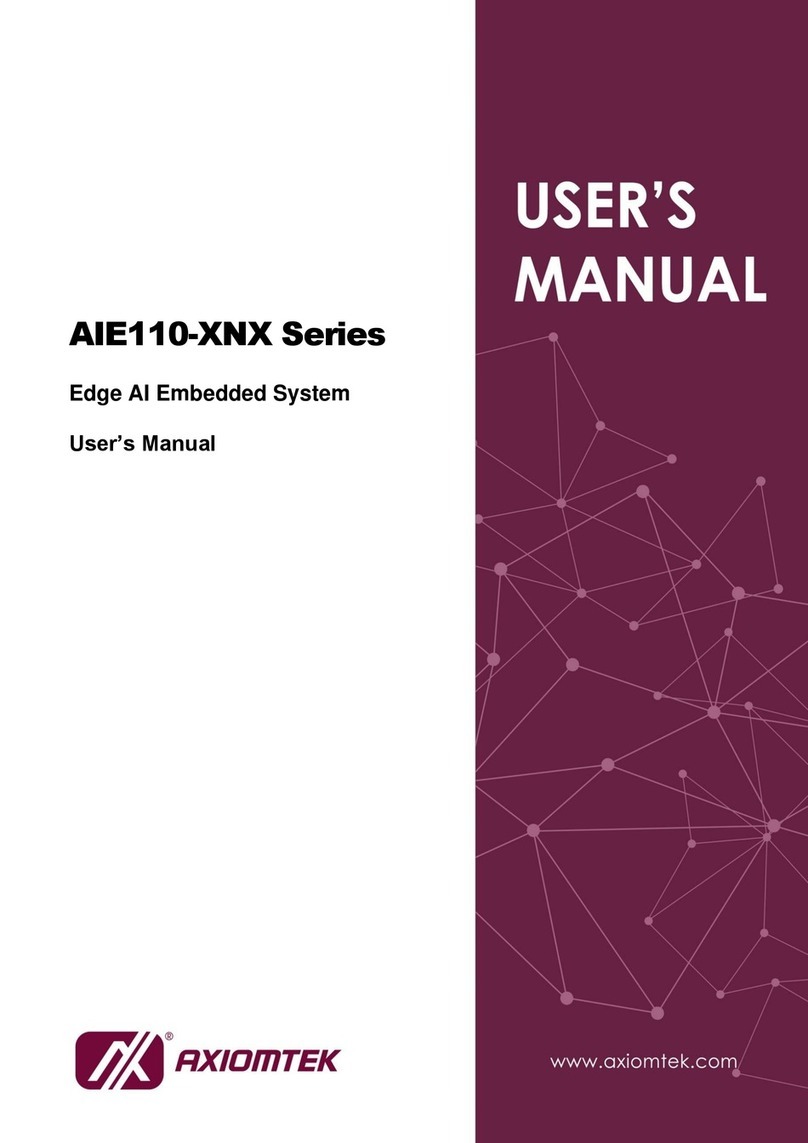
AXIOMTEK
AXIOMTEK AIE110-XNX Series user manual
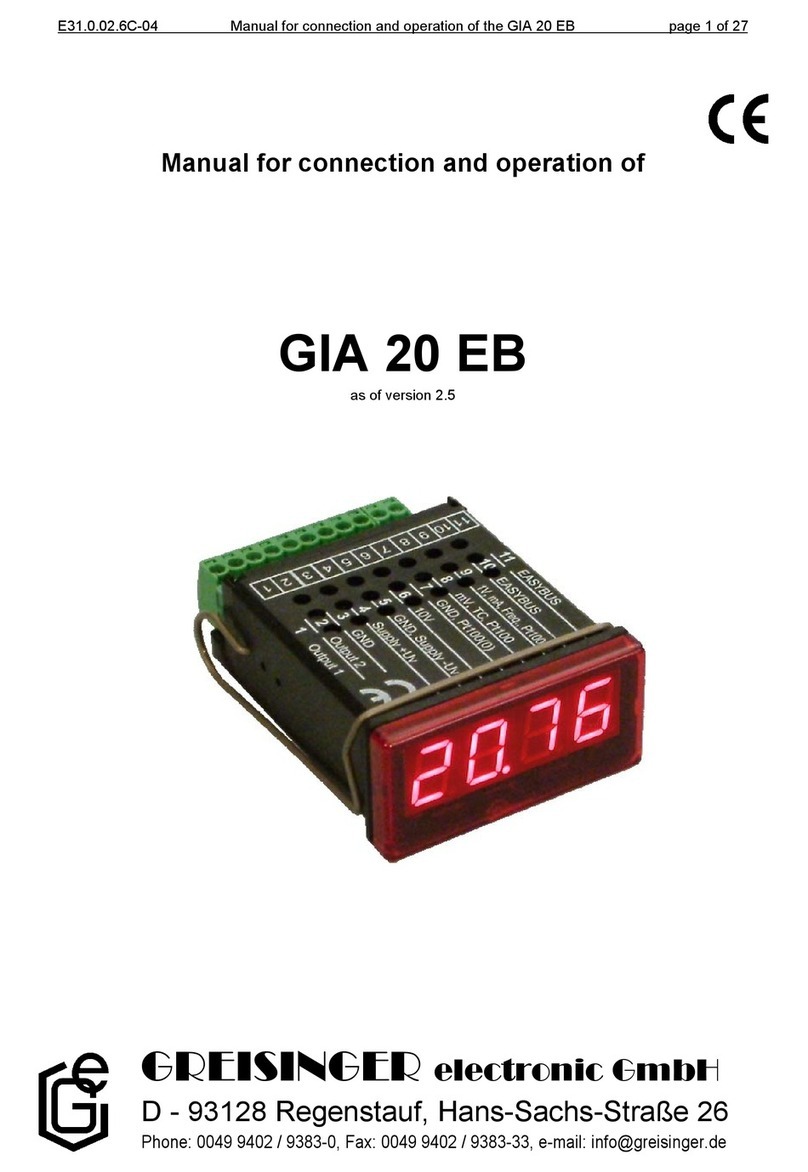
GREISINGER
GREISINGER GIA 20 EB Manual for connection and operation
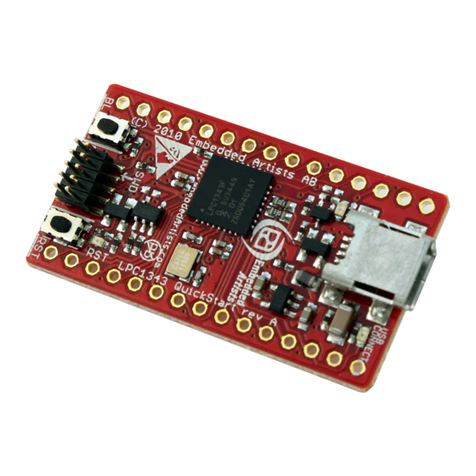
Embedded Artists
Embedded Artists LPC1343 user guide
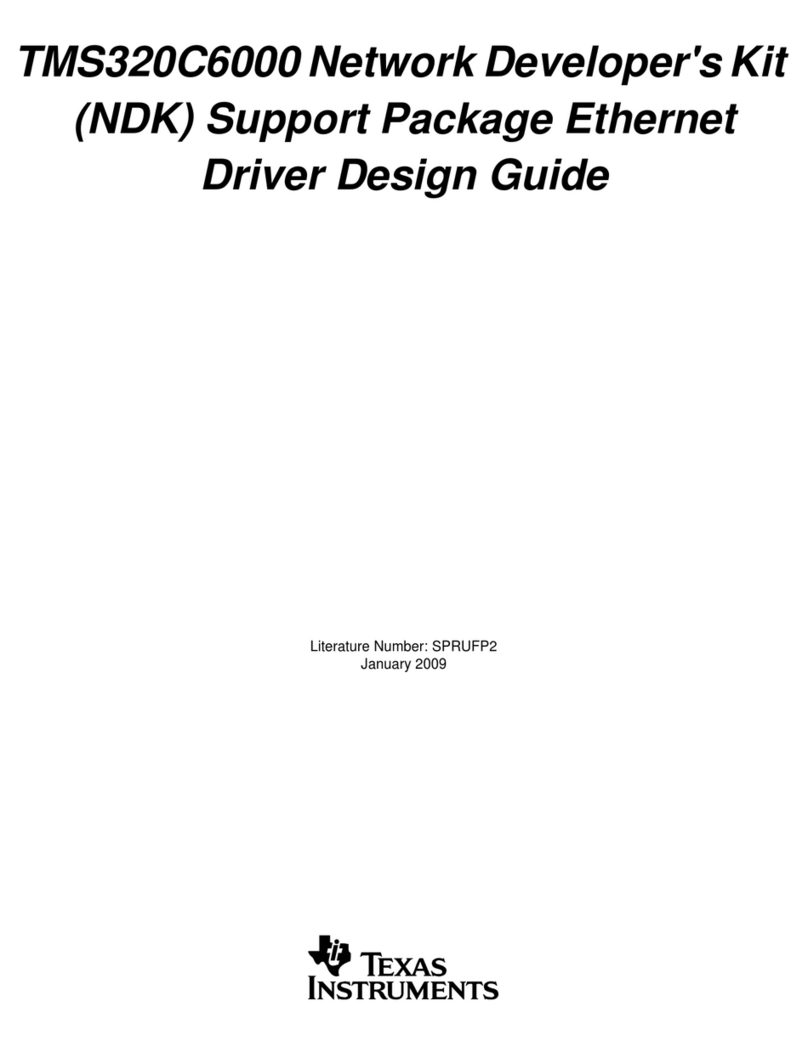
Texas Instruments
Texas Instruments TMS320C6000 DSP Design guide
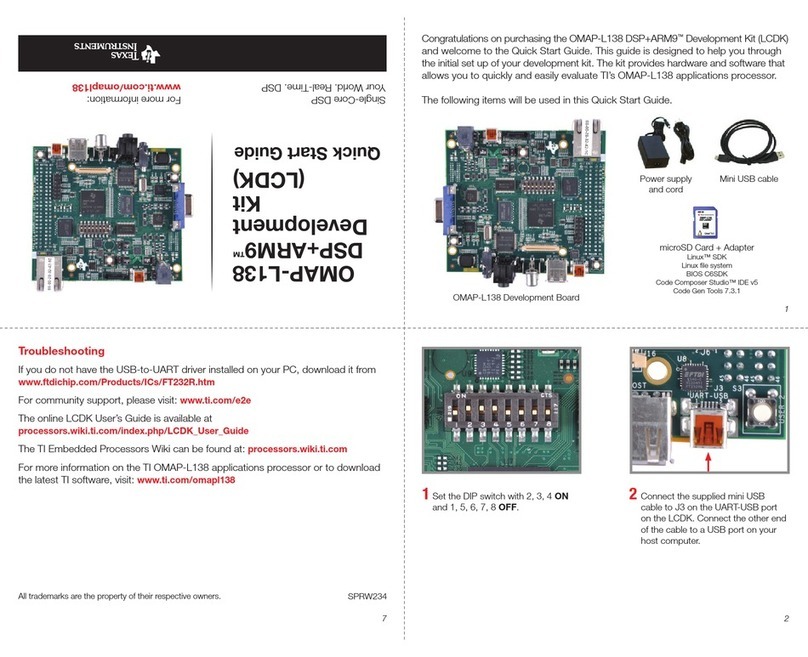
Texas Instruments
Texas Instruments OMAP-L138 DSP + ARM9 quick start guide
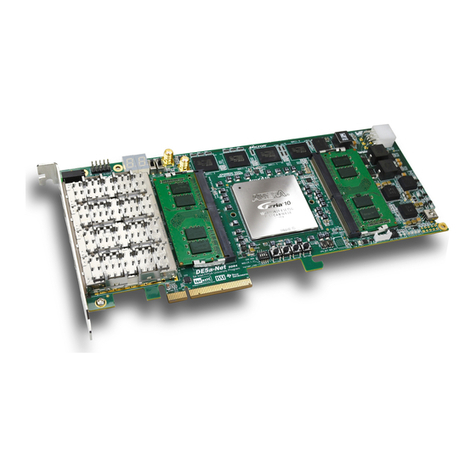
Terasic
Terasic DE5a-Net DDR4 Edition user manual
